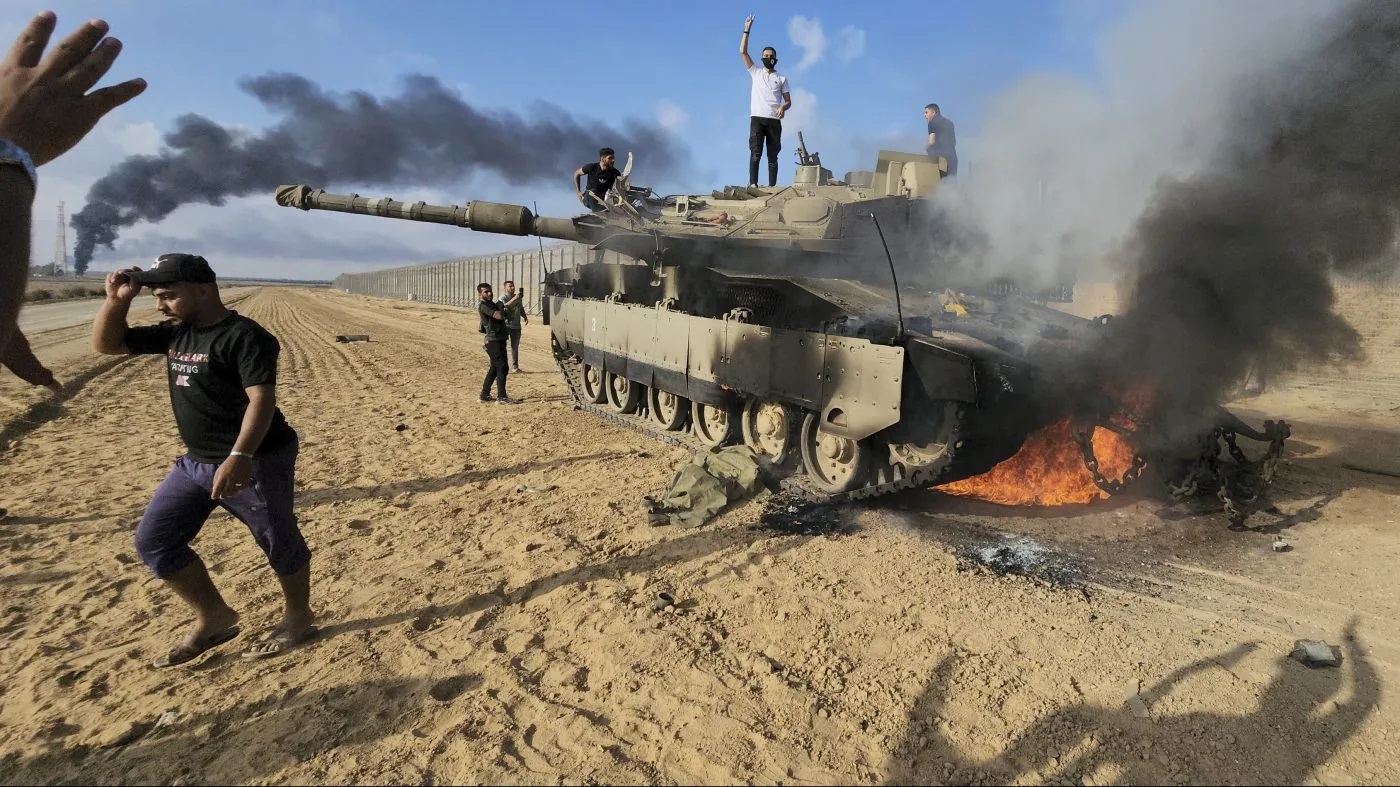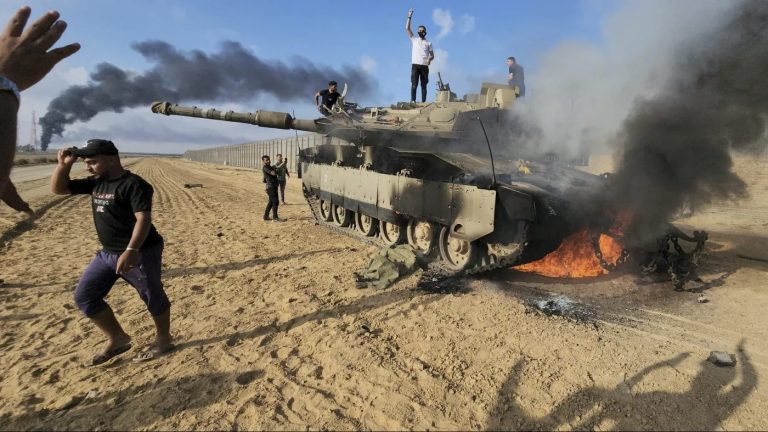A Look Into Israel-Hamas Ceasefire Developments


Reports from multiple international sources confirm that Israel and Hamas have reached an agreement on the first phase of a U.S.-brokered ceasefire plan for Gaza.
This marks a significant breakthrough after nearly two years of conflict, though full implementation and subsequent phases remain uncertain. The deal was announced by U.S. President Donald Trump following intense negotiations in Sharm el-Sheikh, Egypt, mediated by Egypt, Qatar, and Turkey.
While not yet fully ratified, it is expected to take effect within 24 hours of Israel’s cabinet approval, scheduled for this evening. The first phase focuses on halting hostilities, hostage releases, and partial Israeli withdrawals.
Hamas to release ~20 living Israeli hostages and remains of ~28 deceased within 72 hours of ceasefire start. Israel to release hundreds of Palestinian prisoners in return. Trump stated releases could begin as early as Monday or Tuesday.
Register for Tekedia Mini-MBA edition 18 (Sep 15 – Dec 6, 2025): registration continues.
Tekedia AI in Business Masterclass opens registrations.
Join Tekedia Capital Syndicate and co-invest in great global startups.
Register for Tekedia AI Lab: From Technical Design to Deployment.
Israeli Military Actions
Partial troop withdrawal to a buffer zone along Gaza’s edges, retaining control of ~53% of the territory initially. Full withdrawal and Hamas disarmament slated for later phases. Rafah crossing (Egypt-Gaza) to reopen for aid influx, with EU and Palestinian Authority oversight. UN ready to “scale up” reconstruction efforts.
Part of Trump’s 20-point framework, including eventual Gaza governance, reconstruction 3-5 years, and regional normalization. Second phase negotiations to start immediately. This builds on a fragile January 2025 truce that lasted only weeks before collapsing.
Hamas has emphasized guarantees against Israeli violations, while Israel insists on Hamas disarmament and no return to pre-October 7, 2023, conditions. The war, triggered by Hamas’s October 7, 2023, attack killing ~1,200 Israelis and taking 251 hostages, has killed over 67,000 Palestinians and devastated Gaza.

Celebrations erupted in Tel Aviv and Khan Younis upon the announcement, with families of hostages expressing “excitement and apprehension.” UN Secretary-General António Guterres hailed it as a step for aid and recovery. Qatar’s foreign ministry confirmed all provisions are agreed.
Critics, including some Palestinian voices, worry it’s “Oslo 2.0” without addressing root issues like occupation. Hamas rejects immediate disarmament, and Israeli hardliners in Netanyahu’s coalition may push back. Enforcement by guarantors— U.S., Egypt, Qatar will be key, given past violations.
Trump plans to travel to Egypt for a signing ceremony. Some accused figures like Gary Lineker of silence on the deal after years of anti-Israel posts, suggesting bias. Others decried ongoing IDF actions like tank fire near crowds despite the agreement.

Posts highlighted U.S. aid to Israel ~$33B since 2023 and calls for accountability, with one noting Spain’s new arms embargo as “too late.” This phase offers real hope for de-escalation, but history shows ceasefires here are fragile—sustained diplomacy will determine if it endures.
Impact of the Israel-Hamas Ceasefire on West Bank Tensions
The West Bank has seen a surge in violence since October 2023, driven by Israeli settler attacks, military raids, and Palestinian militant responses, resulting in over 700 Palestinian deaths and the displacement of thousands.
While the ceasefire could indirectly ease some pressures, early indicators suggest ongoing or even heightened risks if root causes like settlement expansion and administrative detentions are not addressed.
The ceasefire’s scope is Gaza-centric, with no explicit provisions for the West Bank in Trump’s 20-point framework. This has fueled skepticism among Palestinian leaders and activists, who view the deal as incomplete without tackling occupation-wide issues.
Partial Gaza pullback might free up troops, risking intensified raids; conversely, diplomatic momentum could pressure Netanyahu for restraint. No slowdown observed; Al Jazeera reports ongoing abductions and clashes in Ramallah, with Palestinians accusing Israel of using the ceasefire as a “diversion.”
Palestinian Responses
Rising militancy from groups like Lions’ Den, fueled by Gaza solidarity and economic despair unemployment >40%. De-escalation in Gaza might reduce recruitment and arms flows, but unmet demands could spark protests or attacks.
Prisoner exchanges hundreds released may include some West Bankers, easing overcrowding, but broader governance talks Phase 2 could open doors for PA reforms. Jubilation in Gaza contrasts with West Bank caution; PA President Abbas welcomed the deal but demanded “end to occupation” extensions.
Iranian-backed groups (e.g., PIJ) link West Bank actions to Gaza; Houthi threats tied to broader axis. If ceasefire holds, it could isolate militants and encourage Arab normalization (e.g., Saudi incentives), reducing proxy support.
Iran endorsed Hamas’s partial acceptance but opposes disarmament, signaling potential West Bank proxy escalations if Phase 2 stalls. The January 2025 truce provided temporary relief in Gaza but saw “implementation issues and Israeli escalations in the West Bank,” per the Friends Committee on National Legislation, including a 20% spike in settler violence during that period.
This pattern underscores fragility—ceasefires often shift, rather than resolve, focus to the West Bank. Israeli officials, including Netanyahu, prioritize “total victory” over Hamas but have not signaled West Bank concessions, amid coalition pressures from ultranationalists.
Internationally, the UN and EU urge integrating West Bank reforms into Phase 2 negotiations, with Guterres warning of “destabilization” if ignored. Without enforcement via U.S./Qatar guarantors, the ceasefire could embolden settlers.
Economically, stalled reconstruction in Gaza might exacerbate West Bank grievances, potentially leading to unified intifada-like unrest. Minimal direct relief, with tensions likely persisting or worsening in hotspots like Jenin. Success hinges on Phase 2 talks starting “immediately,” potentially expanding to West Bank security coordination and settlement freezes.
Global advocacy—like the Ireland’s push for an Occupied Territories Bill—must intensify to prevent “normalization” without accountability. Optimists see this as a “fragile peace” gateway, but as one analyst noted, “reconstruction often means profit… not justice,” risking buried war crimes.





